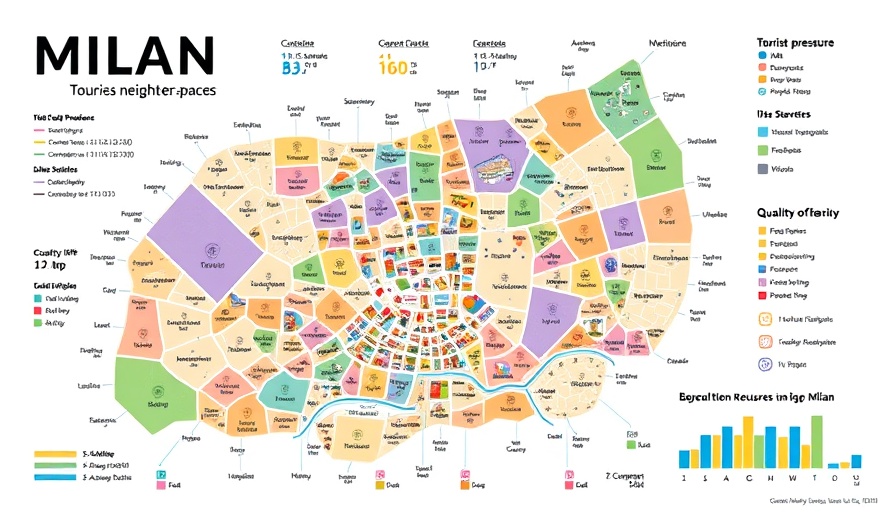
Understanding Overtourism: The Milan Breakthrough
The bustling streets of Milan are often filled with tourists, yet a groundbreaking study has revealed that increasing tourist numbers do not automatically translate to lower quality of life for residents. This research posits a more nuanced reality in urban tourism, suggesting that in some neighborhoods, visitors actually enhance the resident experience.
Tourism and Urban Quality of Life: A Complex Relationship
According to the white paper produced by The Data Appeal Company in collaboration with Doxa, insights were drawn from more than 500 residents and 130 digital sources. The findings indicate that certain districts, like Barona and Navigli, exhibit high tourism alongside improved living conditions. These areas boast parks, cultural vibrancy, and active urban renewal efforts, prompting a lively community spirit.
Neighborhood Variability in Tourist Impact
Interestingly, the research uncovered a rich tapestry of experiences throughout the city. While areas like the Historic Center juggle significant tourist traffic with strong livability thanks to its amenities, others like Città Studi reveal a counterintuitive trend—lower resident satisfaction despite cultural appeal and educational institutions. By demonstrating this variability, the study contradicts the oversimplified narrative that overtourism leads to resident unhappiness.
Valuable Resident Insights on Tourism
The study showcases a community grappling with mixed feelings about tourism. Notably, a large percentage—75%—of residents appreciate essential services, while 74% celebrate Milan's rich cultural offerings. However, there remain concerns: 77% feel rising tourism correlates with increased living costs, highlighting a delicate balance that city leaders must navigate.
What Does this Mean for Policy and Future Travel?
Mirko Lalli, the CEO of The Data Appeal Company, emphasizes the need for a nuanced approach to urban tourism policy. The research creates a framework that policymakers can use across European cities to maintain the delicate harmony between catering to tourists and nurturing community needs. By valuing both objective data and subjective experiences, cities can strive for sustainable development.
Beyond the Numbers: Prosecuting the Narrative
Susanna De Luca, Senior Research Manager at Doxa, points out that it is essential to reassess the conventional wisdom surrounding tourism impacts. In Milan, the findings suggest that tourism is not merely a challenge but also a possible contributor to urban vitality. This perspective may inspire cities worldwide to redefine their travel strategies.
Conclusion: Rethinking Travel Narratives
Emerging data from insights in Milan paints a different picture of tourism's role in urban life—one that encourages deeper consideration among residents, policymakers, and travelers alike. Moving forward, it’s crucial to balance the scales of tourism management to foster environments that benefit both visitors and locals.
As we transition back into exploring the world, understanding such dynamics can help us enjoy our trips while respecting the communities we visit. Perhaps the next journey could be as much about connection as it is about discovery, and the city of Milan stands as an intriguing case study for travel enthusiasts and educators alike. Join the conversation about how tourism can evolve positively by exploring more sustainable travel practices!
 Add Row
Add Row  Add
Add 




Write A Comment